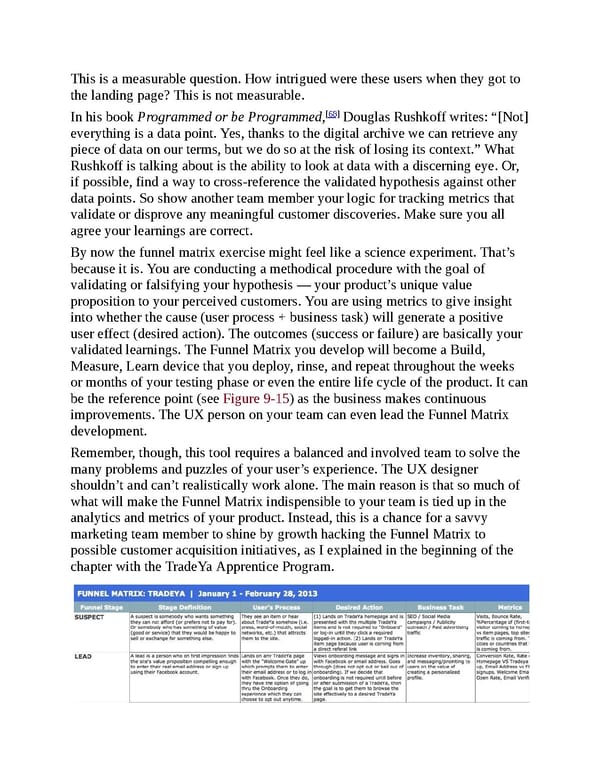This is a measurable question. How intrigued were these users when they got to the landing page? This is not measurable. [68] In his book Programmed or be Programmed, Douglas Rushkoff writes: “[Not] everything is a data point. Yes, thanks to the digital archive we can retrieve any piece of data on our terms, but we do so at the risk of losing its context.” What Rushkoff is talking about is the ability to look at data with a discerning eye. Or, if possible, find a way to cross-reference the validated hypothesis against other data points. So show another team member your logic for tracking metrics that validate or disprove any meaningful customer discoveries. Make sure you all agree your learnings are correct. By now the funnel matrix exercise might feel like a science experiment. That’s because it is. You are conducting a methodical procedure with the goal of validating or falsifying your hypothesis — your product’s unique value proposition to your perceived customers. You are using metrics to give insight into whether the cause (user process + business task) will generate a positive user effect (desired action). The outcomes (success or failure) are basically your validated learnings. The Funnel Matrix you develop will become a Build, Measure, Learn device that you deploy, rinse, and repeat throughout the weeks or months of your testing phase or even the entire life cycle of the product. It can be the reference point (see Figure 9-15) as the business makes continuous improvements. The UX person on your team can even lead the Funnel Matrix development. Remember, though, this tool requires a balanced and involved team to solve the many problems and puzzles of your user’s experience. The UX designer shouldn’t and can’t realistically work alone. The main reason is that so much of what will make the Funnel Matrix indispensible to your team is tied up in the analytics and metrics of your product. Instead, this is a chance for a savvy marketing team member to shine by growth hacking the Funnel Matrix to possible customer acquisition initiatives, as I explained in the beginning of the chapter with the TradeYa Apprentice Program.
 UX Strategy: How to Devise Innovative Digital Products that People Want Page 262 Page 264
UX Strategy: How to Devise Innovative Digital Products that People Want Page 262 Page 264